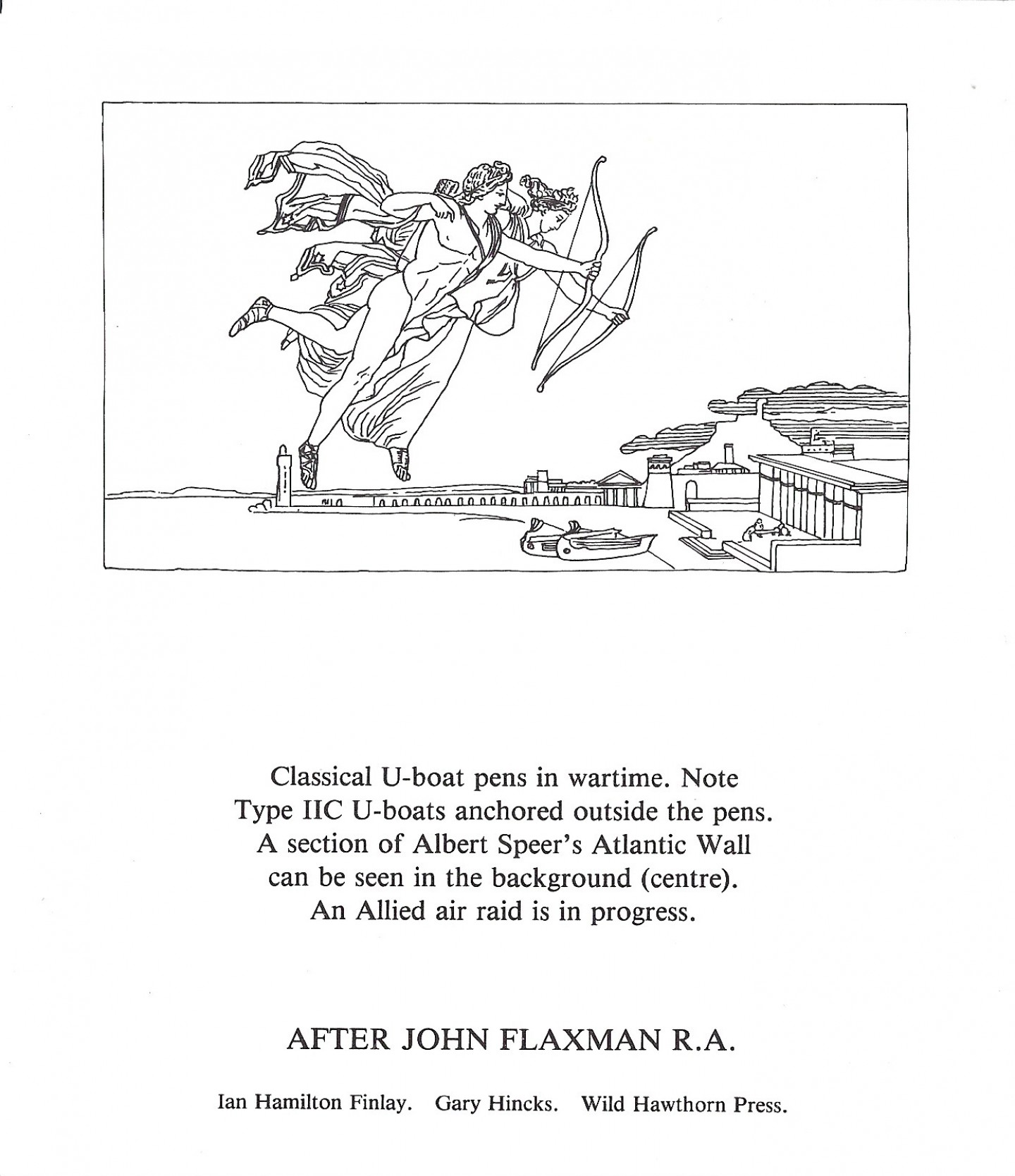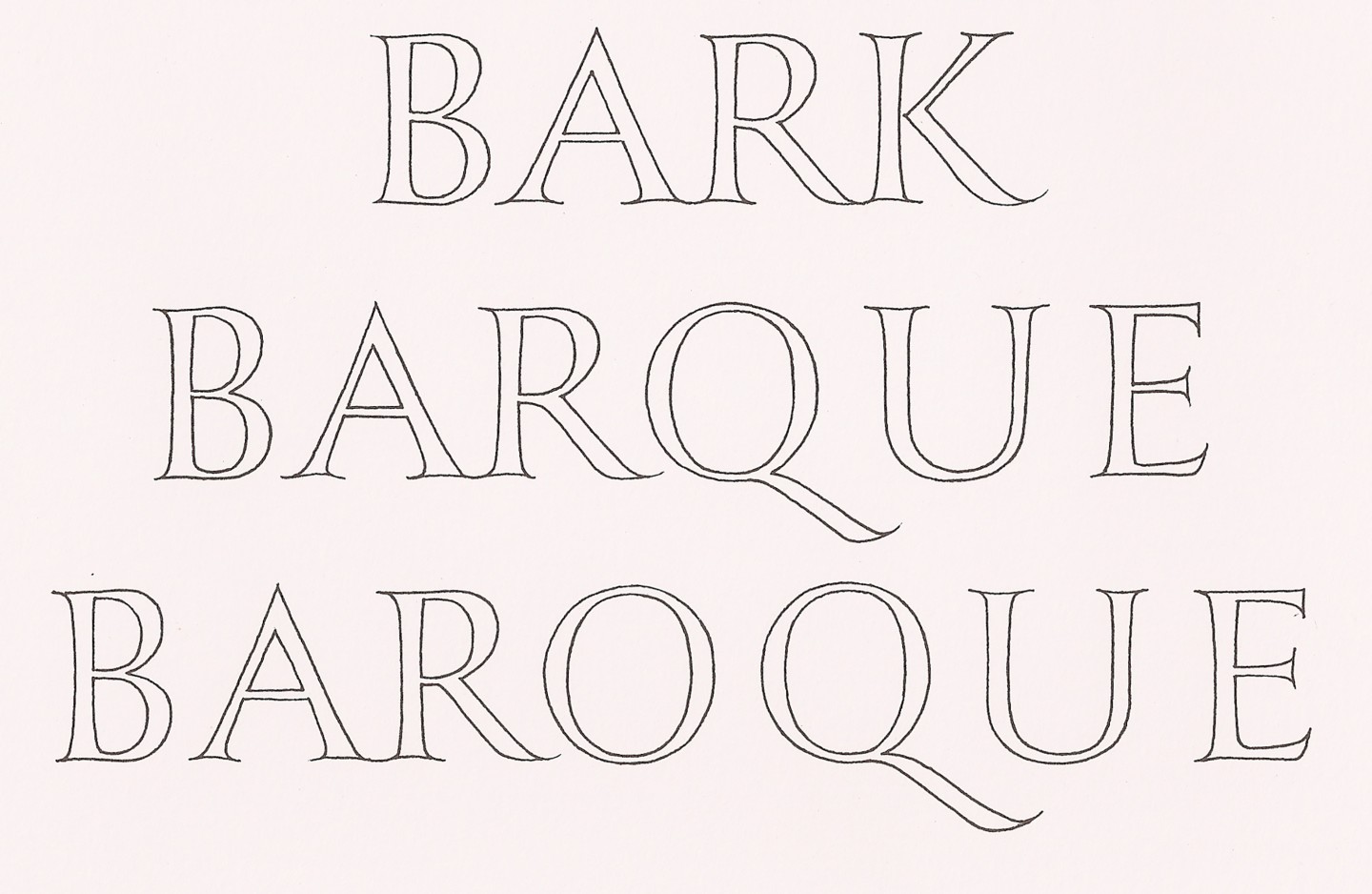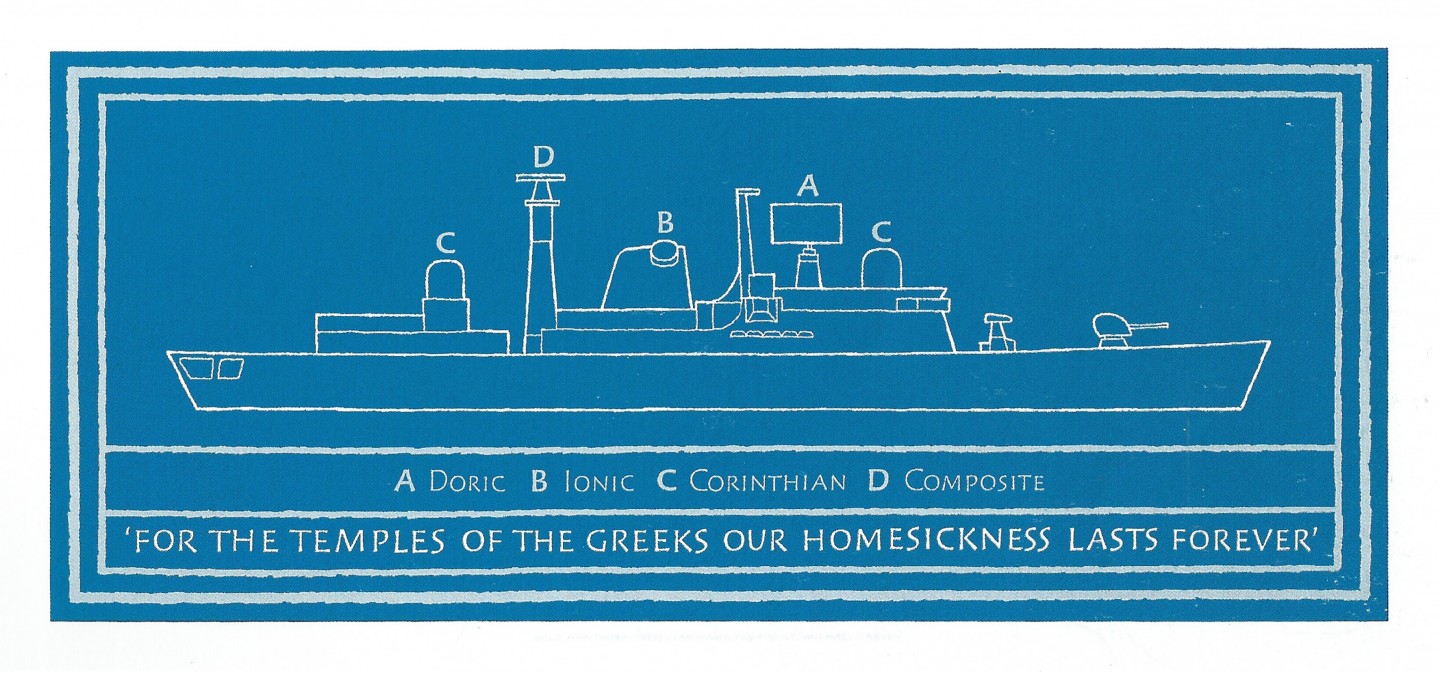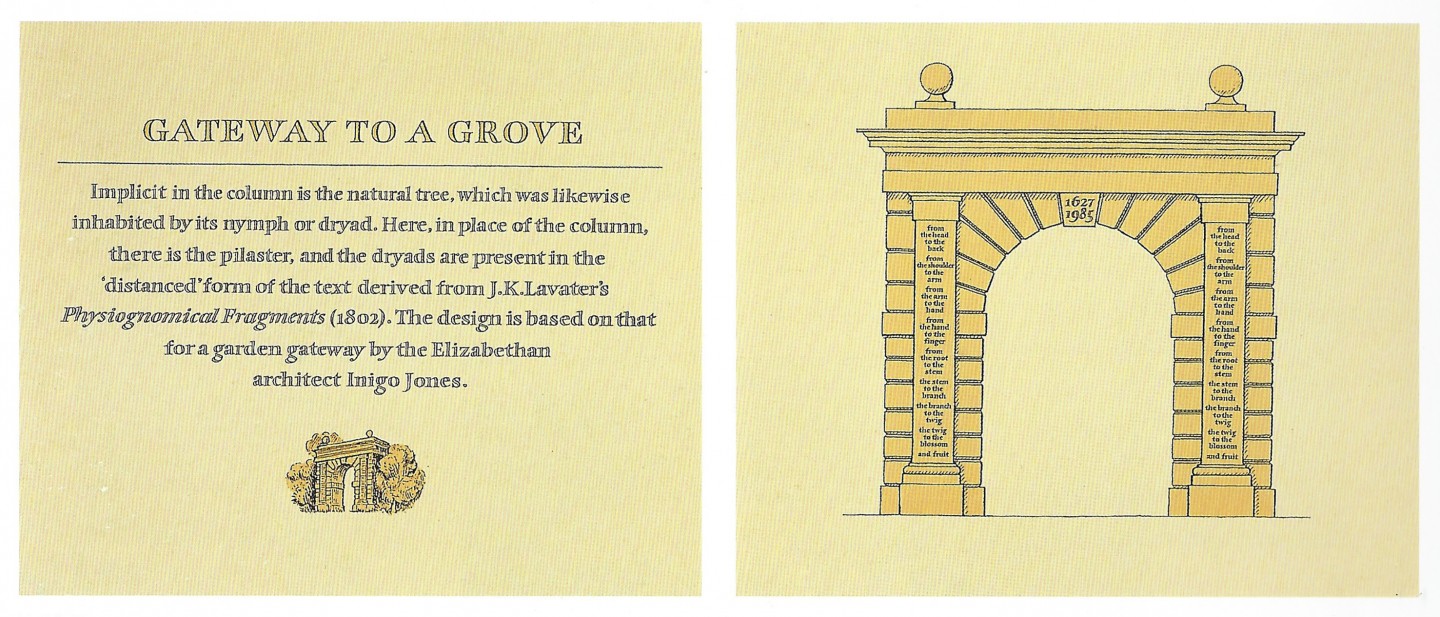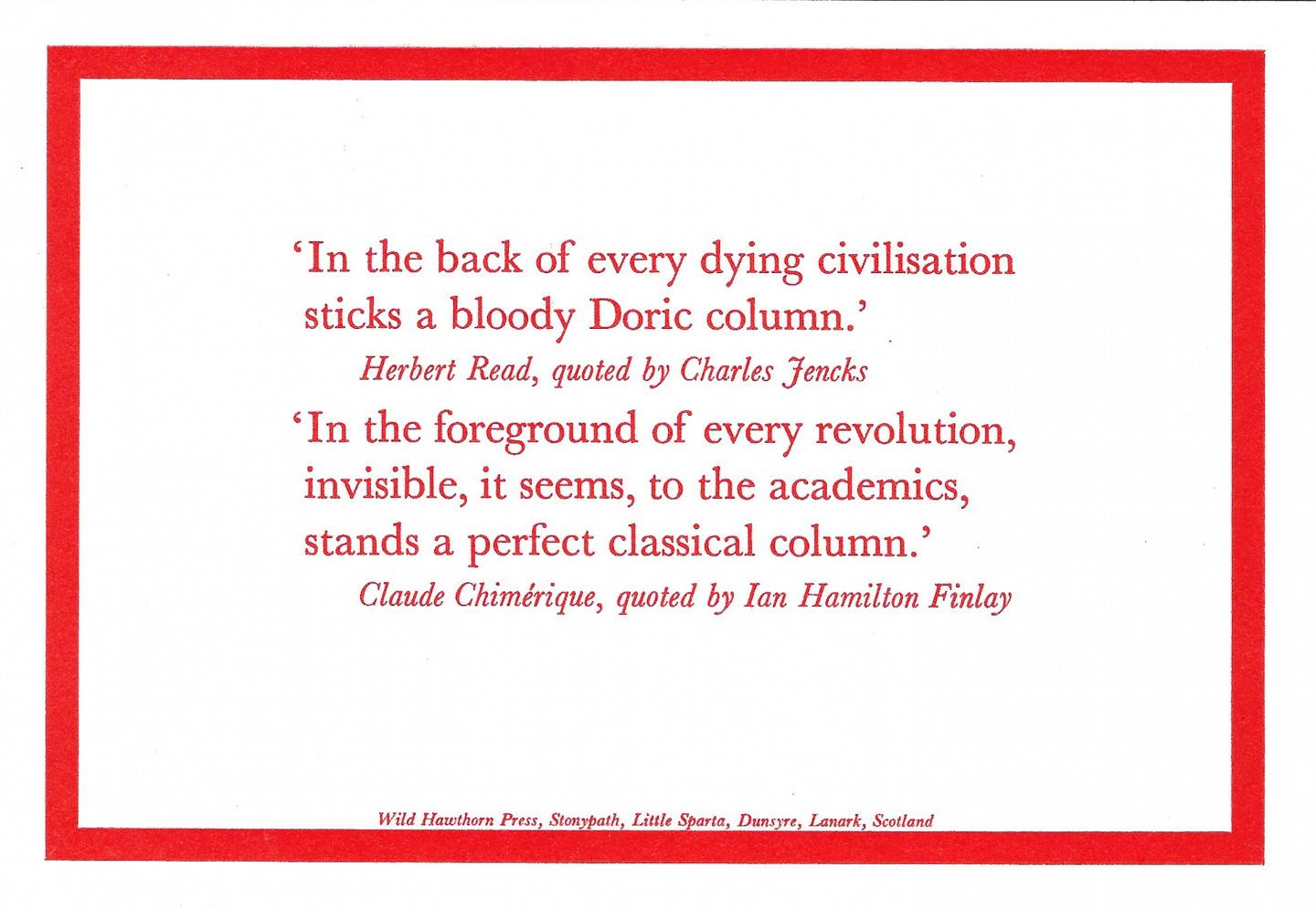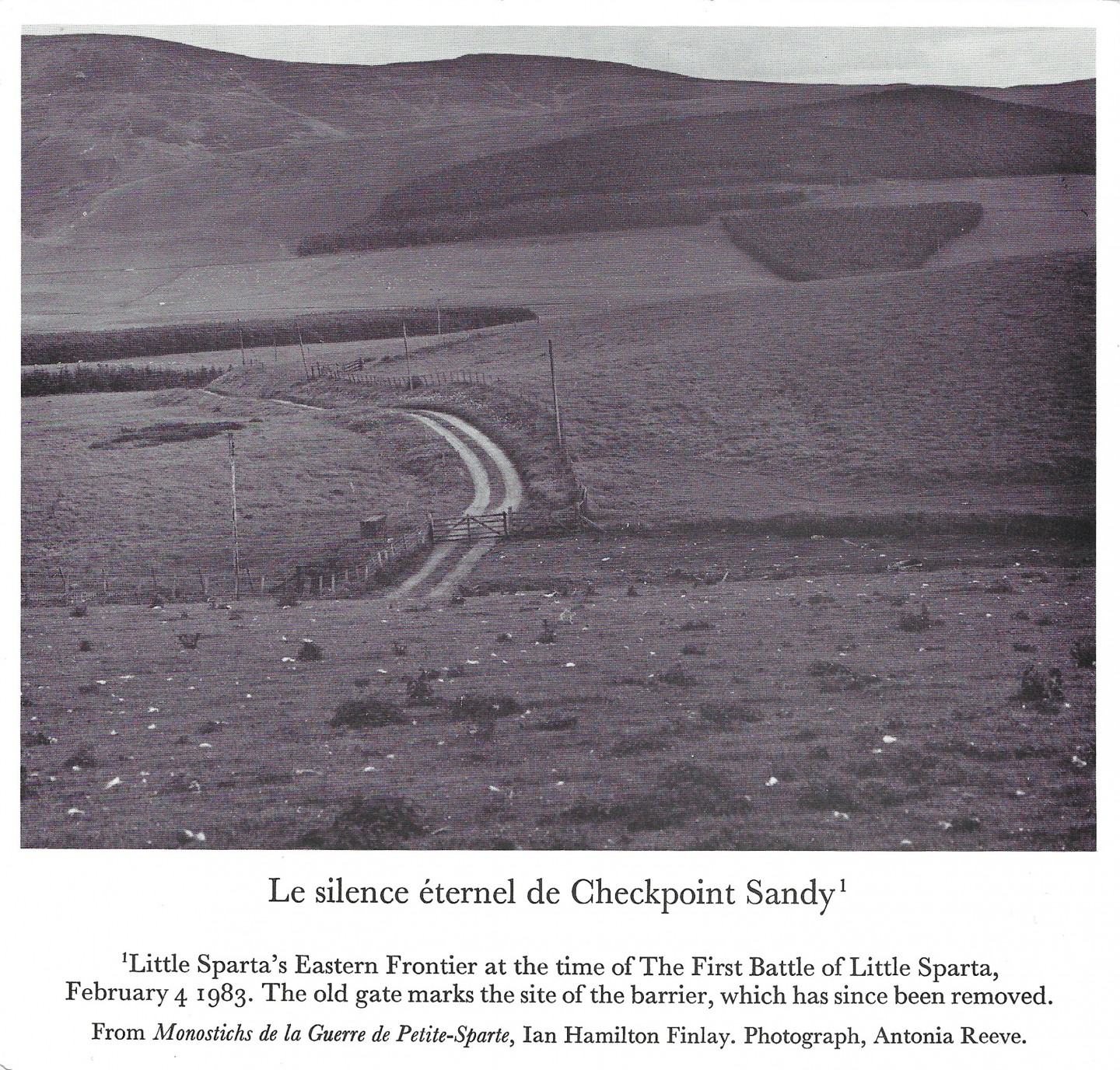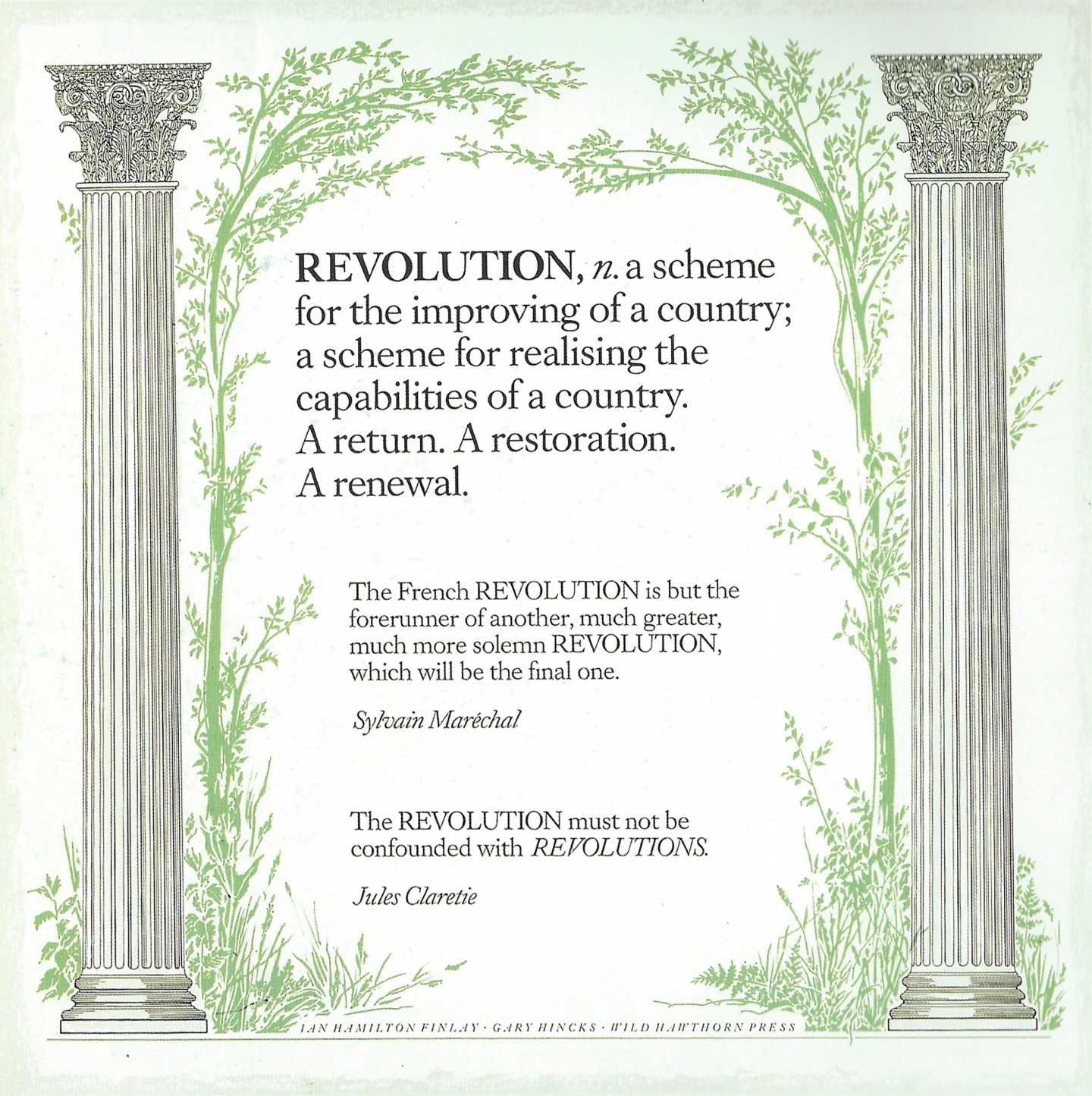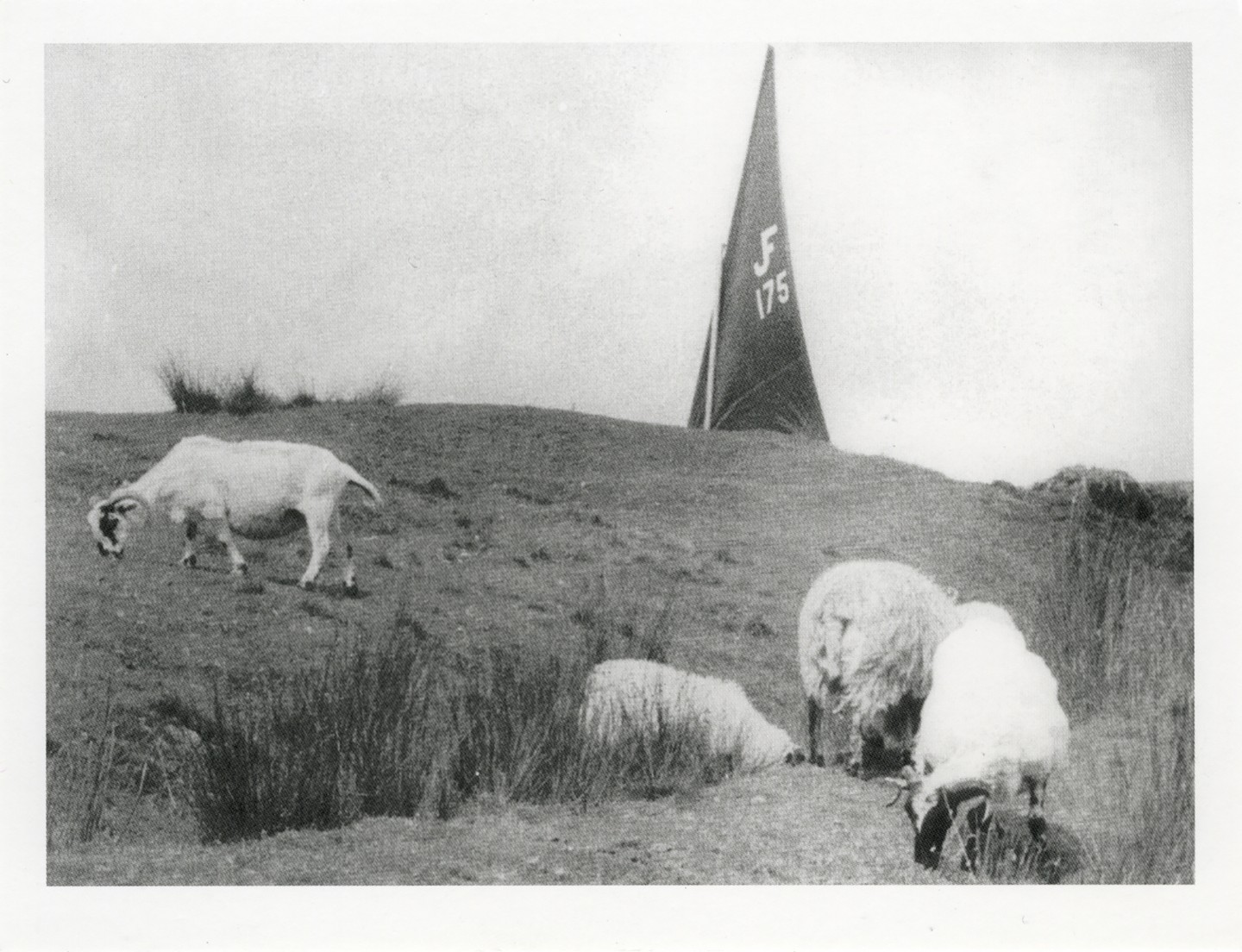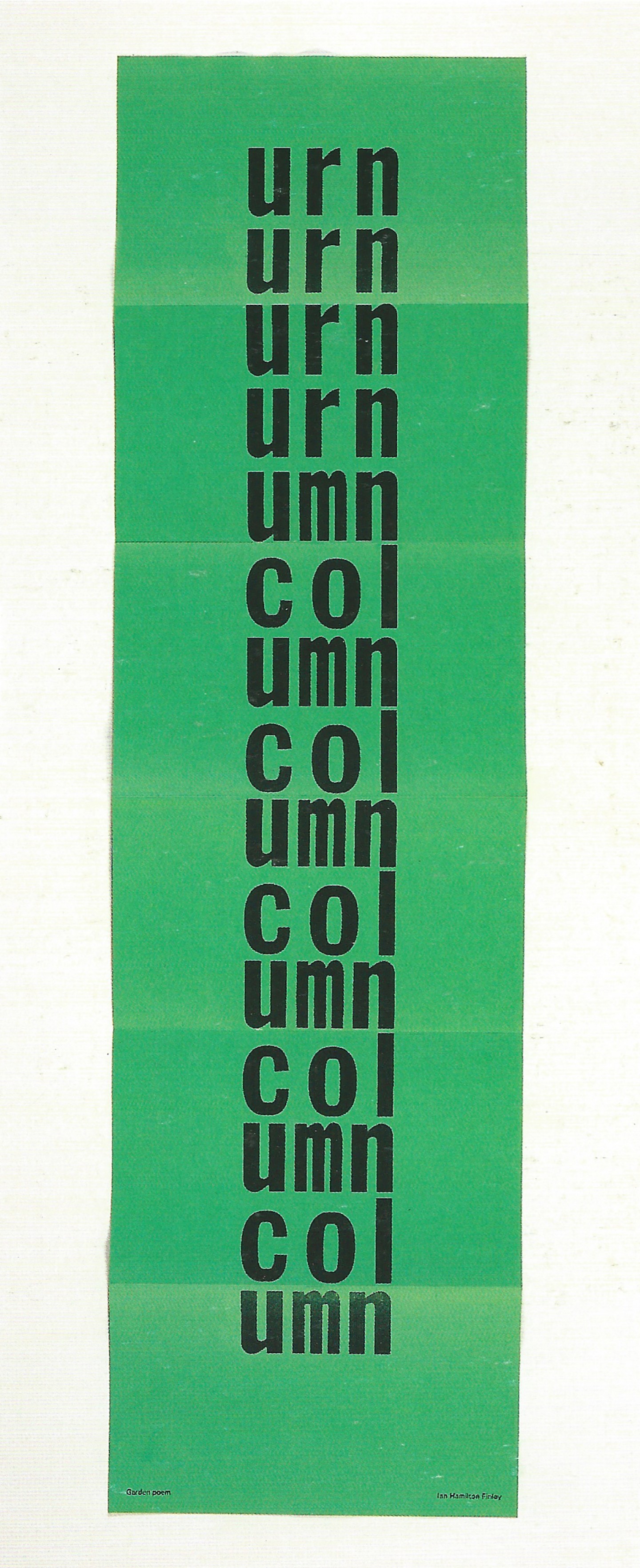DESCRIPTION
In this work created in collaboration with carver, John Sellman, Finlay explores the legacies of classical culture in the formative events of modern Europe. The partially displaced segments of the trunk of a palm tree, a motif of ancient Greek architecture, are shown alongside the drums of a military band of the kind that would have accompanied the Jacobin forces during the French Revolution. Finlay invites us to consider how classical virtue and rationalism evolved into the bloody zealotry of the Revolution and its aftermath.
DETAILS
-
Artist
Ian Hamilton Finlay
-
Date
1993
-
Medium
Sandstone sculpture
-
Object number
3238
-
Subject
-
Copyright
© Courtesy of the Estate of Ian Hamilton Finlay
ARTIST PROFILE
Ian Hamilton Finlay CBE, 1925-2006
Although he studied at Glasgow School of Art, Finlay’s first creative success was as a writer. His discovery of concrete poetry in the 1960s was a major breakthrough in his practice and he began to produce booklets, posters, and wall-mounted works combining text and form. Major works of conceptual sculpture using text were produced by craftsmen to his specifications. Drawing on ideas from classical philosophy and the French Revolution, he began to exhibit widely and was shortlisted for the Turner Prize in 1985. His garden at Little Sparta in the Pentland Hills, begun in 1966 and now looked after by a trust, is considered to be the finest manifestation of his work.





